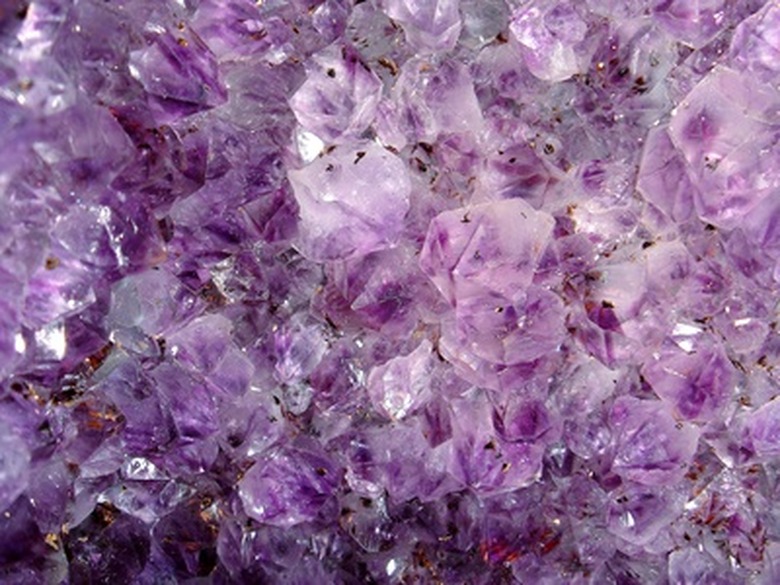Why Does Glass Turn Purple?
When exposed to sunlight, some pieces of clear glass will gradually turn purple. Others, however, will remain clear. What causes some glass to turn purple? The answer lies in the presence of a little-known element: manganese.
The preparation of glass
The preparation of glass
The Bureau of Land Management/Society for Historical Archaeology notes that most glass is composed of sand which contains silica, lime and soda particles. If glass were made up of pure silica, it would automatically have a clear appearance. However, the presence of impurities like soda and lime can cause color variations to appear within the glass. In order to produce clear glass, additional decolorizing elements must be added to offset these impurities. Common decolorizing elements include compounds that contain selenium, arsenic and manganese.
Manganese and Glass Production
Manganese and Glass Production
The chemical element manganese has a long history with glass making. Manganese is naturally found within the mineral ore pyrolusite. Pyrolusite was used by early glassblowers and artists to create purple glass. This purple color was caused by the presence of manganese dioxide. Later chemists introduced pyrolusite into the making of glass to balance impurities. For example, if the sand used to create glass contained traces of iron, the untreated glass produced would have a yellow appearance. The introduction of pyrolusite would balance the yellow tint with purple, causing the final glass product to be clear in appearance.
Why Glass Turns Purple
Why Glass Turns Purple
The element manganese found within glass will remain colorless as long as it does not oxidize to form manganese oxide. However, radiation from the sun will cause manganese to oxidize. Glass exposed to sunlight for a long period of time will turn purple if it contains manganese. However, glass that contains manganese that is not exposed to sunlight, UV light or other forms of radiation will retain its clear appearance.
Cite This Article
MLA
Korcok, Jessica. "Why Does Glass Turn Purple?" sciencing.com, https://www.sciencing.com/glass-turn-purple-7183982/. 24 April 2017.
APA
Korcok, Jessica. (2017, April 24). Why Does Glass Turn Purple?. sciencing.com. Retrieved from https://www.sciencing.com/glass-turn-purple-7183982/
Chicago
Korcok, Jessica. Why Does Glass Turn Purple? last modified March 24, 2022. https://www.sciencing.com/glass-turn-purple-7183982/
